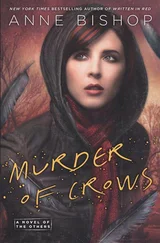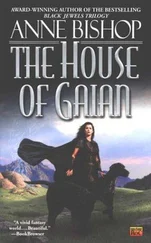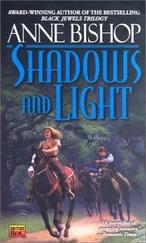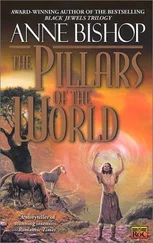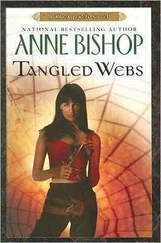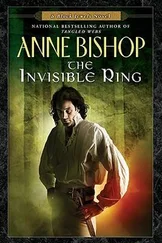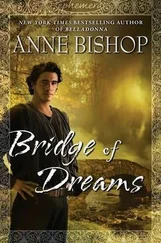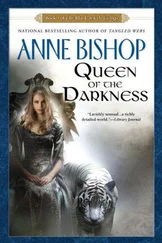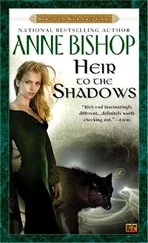Written In Red
(The first book in the Others series)
A novel by Anne Bishop
For Blair
My thanks to Blair Boone for continuing to be my first reader and for all the information about animals and other things that I absorbed and transformed to suit the Others’ world, to Debra Dixon for being second reader, to Doranna Durgin for maintaining the Web site and for information about cow tongues, to Adrienne Roehrich for running the official fan page on Facebook, to Julie Green for telling me about Bully Sticks, to Jennifer Crow for her role as enabler when I talked about the Others Etiquette column, to Nadine Fallacaro for information about things medical, to Douglas Burke for answering questions about police (and for not asking what I would do with the information), and to Pat Feidner for her support and encouragement. Thanks to Kristen Britain, Starr Corcoran, Julie Czerneda, Claire Eamer, Lorne Kates, and Paula Lieberman for their input about stores for the Market Square and the surrounding neighborhood.
A special thanks to the following people who loaned their names to characters, knowing that the name would be the only connection between reality and fiction: Elizabeth Bennefeld, Blair Boone, Douglas Burke, Starr Corcoran, Jennifer Crow, Lorna MacDonald Czarnota, Julie Czerneda, Roger Czerneda, Merri Lee Debany, Michael Debany, Chris Fallacaro, Dan Fallacaro, Mike Fallacaro, Nadine Fallacaro, Mantovani “Monty” Gay, Julie Green, Lois Gresh, Ann Hergott, Danielle Hilborn, Heather Houghton, Lorne Kates, Allison King, and John Wulf.
GEOGRAPHY
NAMID—THE WORLD
CONTINENTS/LAND MASSES (so far)
Afrikah
Cel-Romano/Cel-Romano Alliance of Nations
Felidae
Fingerbone Islands
Storm Islands
Thaisia
Tokhar-Chin
Brittania/Wild Brittania
Great Lakes—Superior, Tala, Honon, Etu, and Tahki
Other lakes—Feather Lakes/Finger Lakes
River—Talulah/Talulah Falls
Cities or villages—Hubb NE (aka Hubbney), Jerzy, Lakeside, Podunk, Sparkletown, Talulah Falls, Toland
DAYS OF THE WEEK
Earthday
Moonsday
Sunsday
Windsday
Thaisday
Firesday
Watersday
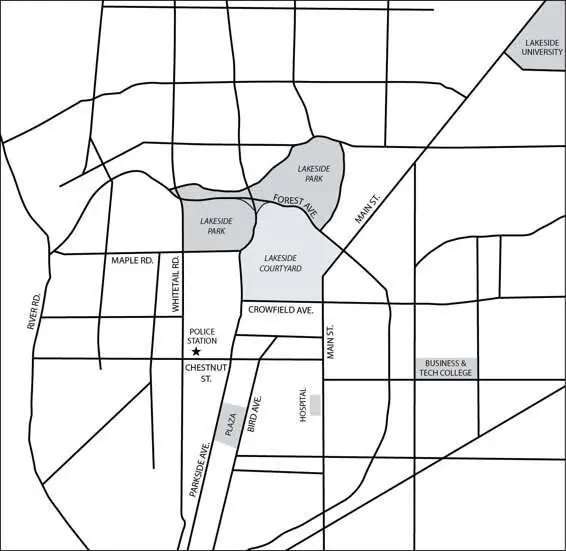

This map was created by a geographically challenged author who put in only the bits she needed for the story.
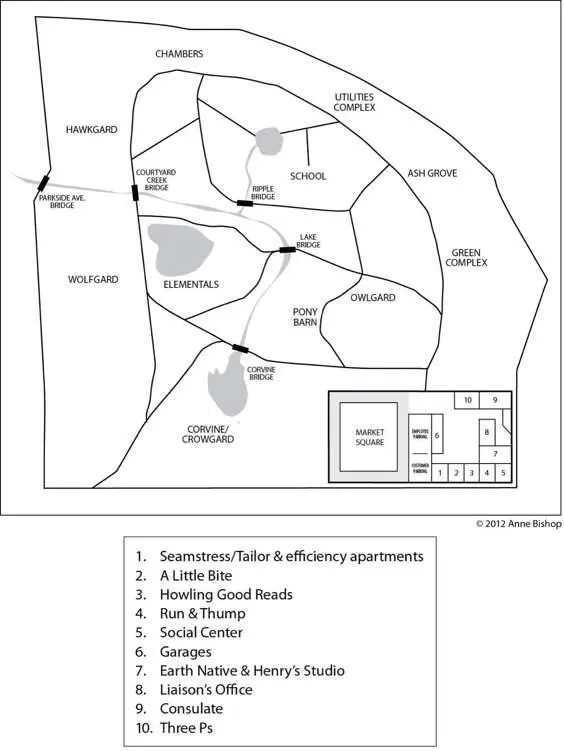
A Brief History of the World
Long ago, Namid gave birth to all kinds of life, including the beings known as humans. She gave the humans fertile pieces of herself, and she gave them good water. Understanding their nature and the nature of her other offspring, she also gave them enough isolation that they would have a chance to survive and grow. And they did.
They learned to build fires and shelters. They learned to farm and build cities. They built boats and fished in the Mediterran and Black seas. They bred and spread throughout their pieces of the world until they pushed into the wild places. That’s when they discovered that Namid’s other offspring already claimed the rest of the world.
The Others looked at humans and did not see conquerors. They saw a new kind of meat.
Wars were fought to possess the wild places. Sometimes the humans won and spread their seed a little farther. More often, pieces of civilization disappeared, and fearful survivors tried not to shiver when a howl went up in the night or a man, wandering too far from the safety of stout doors and light, was found the next morning drained of blood.
Centuries passed, and the humans built larger ships and sailed across the Atlantik Ocean. When they found virgin land, they built a settlement near the shore. Then they discovered that this land was also claimed by the terra indigene , the earth natives. The Others.
The terra indigene who ruled the continent called Thaisia became angry when the humans cut down trees and put a plow to land that was not theirs. So the Others ate the settlers and learned the shape of this particular meat, just as they had done many times in the past.
The second wave of explorers and settlers found the abandoned settlement and, once more, tried to claim the land as their own.
The Others ate them too.
The third wave of settlers had a leader who was smarter than his predecessors. He offered the Others warm blankets and lengths of cloth for clothes and interesting bits of shiny in exchange for being allowed to live in the settlement and have enough land to grow crops. The Others thought this was a fair exchange and walked off the boundaries of the land that the humans could use. More gifts were exchanged for hunting and fishing privileges. This arrangement satisfied both sides, even if one side regarded its new neighbors with snarling tolerance and the other side swallowed fear and made sure its people were safely inside the settlement’s walls before nightfall.
Years passed and more settlers arrived. Many died, but enough humans prospered. Settlements grew into villages, which grew into towns, which grew into cities. Little by little, humans moved across Thaisia, spreading out as much as they could on the land they were allowed to use.
Centuries passed. Humans were smart. So were the Others. Humans invented electricity and plumbing. The Others controlled all the rivers that could power the generators and all the lakes that supplied fresh drinking water. Humans invented steam engines and central heating. The Others controlled all the fuel needed to run the engines and heat the buildings. Humans invented and manufactured products. The Others controlled all the natural resources, thereby deciding what would and wouldn’t be made in their part of the world.
There were collisions, of course, and some places became dark memorials for the dead. Those memorials finally made it clear to human government that the terra indigene ruled Thaisia, and nothing short of the end of the world would change that.
So it comes to this current age. Small human villages exist within vast tracks of land that belong to the Others. And in larger human cities, there are fenced parks called Courtyards that are inhabited by the Others who have the task of keeping watch over the city’s residents and enforcing the agreements the humans made with the terra indigene .
There is still sharp-toothed tolerance on one side and fear of what walks in the dark on the other. But if they are careful, the humans survive.
Most of the time, they survive.
Half blinded by the storm, she stumbled into the open area between two buildings. Hoping to hide from whomever was hunting for her as well as get some relief from the snow and wind, she followed an angled wall and ducked around the corner. Her socks and sneakers were soaked, and her feet were so cold she couldn’t feel them. She knew that wasn’t good, wasn’t safe, but she had taken the clothing available just as she had taken the opportunity to run.
No sound of footsteps that would confirm she was being followed, but that didn’t mean anything. Blocked by the wall, even the sounds of the slow-moving traffic were muted.
Читать дальше




